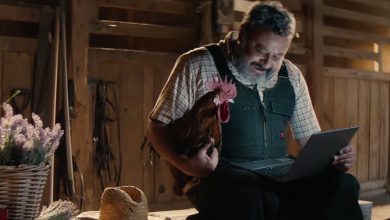MANILA, PHILIPPINES — Last November 2022, the Department of Trade and Industry (DTI) and the Philippine Footwear Federation Inc. (PFFI) along with Zapateria, the Philippines’ first creative hub for footwear design and development, hosted the 8th Filipino Footwear Design Competition (FFDC), the annual event organized to showcase the best Filipino footwear from local designers and manufacturers. For its latest run, FFDC 2022 was set as a national competition with over 70 newcomer designers and students from all over the Philippines.
This year’s theme, DisHenyo or Design Genius, promotes the Philippines’ local culture through the means of celebrating shared Filipino identity for a more sustainable future; promoting each designer’s personal advocacy towards sustainability. The program also serves as a platform for skills building for aspiring designers through a series of creative workshops and professional mentorship programs facilitated by Filipino creative hub, Zapateria with working sessions guided by the Pattern Makers Association of the Philippines. Coming from the restrictions of the recent pandemic, FFDC 2022 employed a hybrid engagement setup of both virtual and in-person activities conducted at the DTI-NCRO CITE and the PFFI Philippine Footwear Academy Campus in Marikina.
FFDC 2022 was made possible with the help of its academic and community partners: Philippine Women’s College of Davao, Eastern Visayas State University, and the Philippine Fashion Coalition.
With almost a hundred entries submitted during the application process, FFDC 2022’s panel of judges consisting of experienced industry leaders and creative professionals chose the Top 5 Finalists based on their concept creations that were later developed into wearable prototypes.
Out of all the wonderful entries, these five creative and impactful designs were deemed exemplary both in creativity and construction:
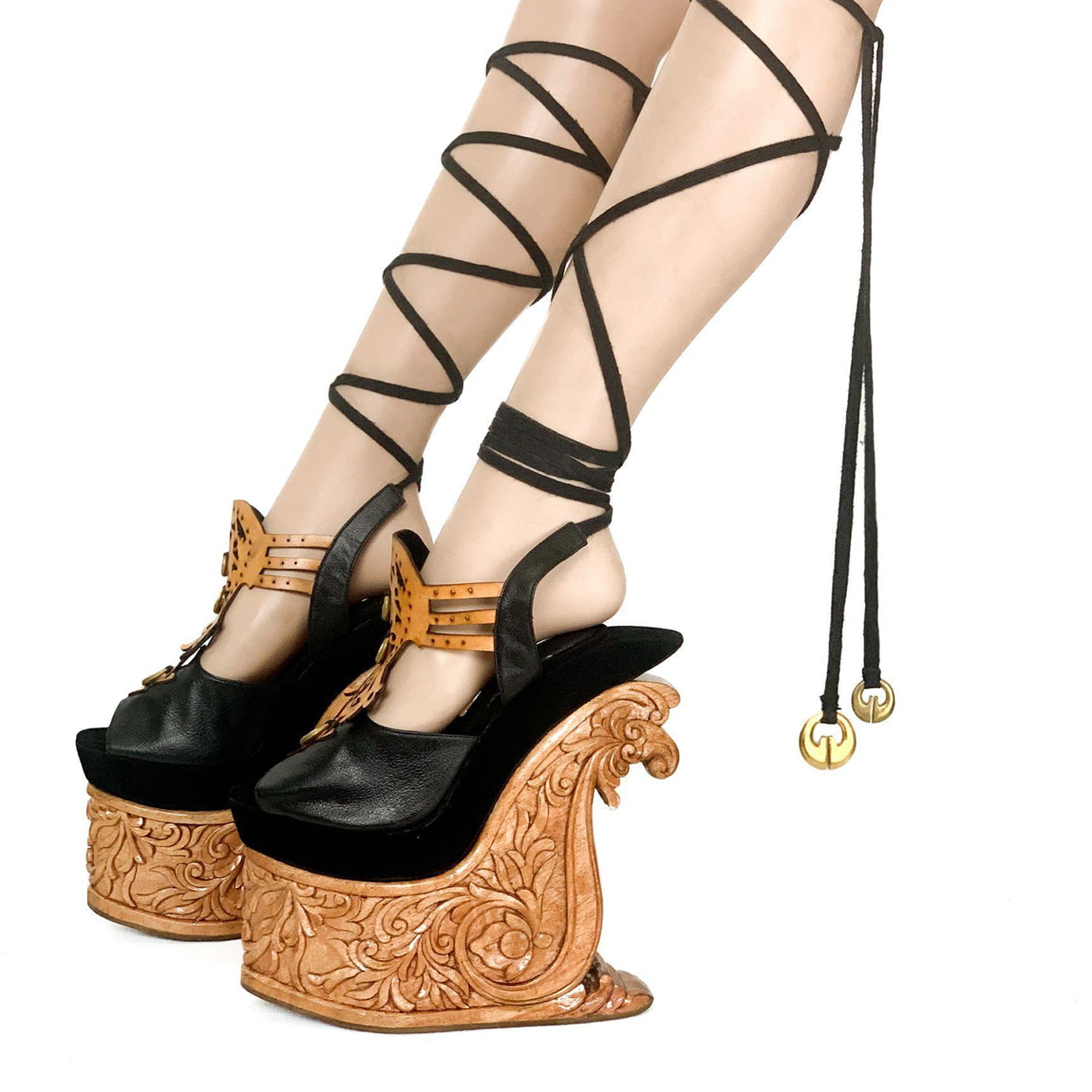
Kaibahan by Lee Villanueva won the top spot as the grand winner of FFDC 2022 with a design inspired by the number of ethnic groups in the Philippines. The concept highlights the diversity and craft heritage of various regions such as the Yakan Badjao, the Maranao, and the Kalinga. With the help of Marikina maker, Roweliza Bags and Shoes, they were able to translate traditional design elements into a fashionable market-ready showpiece.
The design is mostly made of Pinyapel, a locally-sourced material made from discarded pineapple leaves as initiated by the Design Center Philippines, along with woven pinya-cotton laces, pinya-cotton insoles, and hand-smithed metal work. In line with Lee’s personal advocacy and experience of residing in different parts of the Philippines, the piece aims to preserve and promote the diverse and unique artistic cultural heritage and beliefs of the ethnic groups featured in the design as well as the craftsmanship and techniques used by traditional Filipino craftsmen.
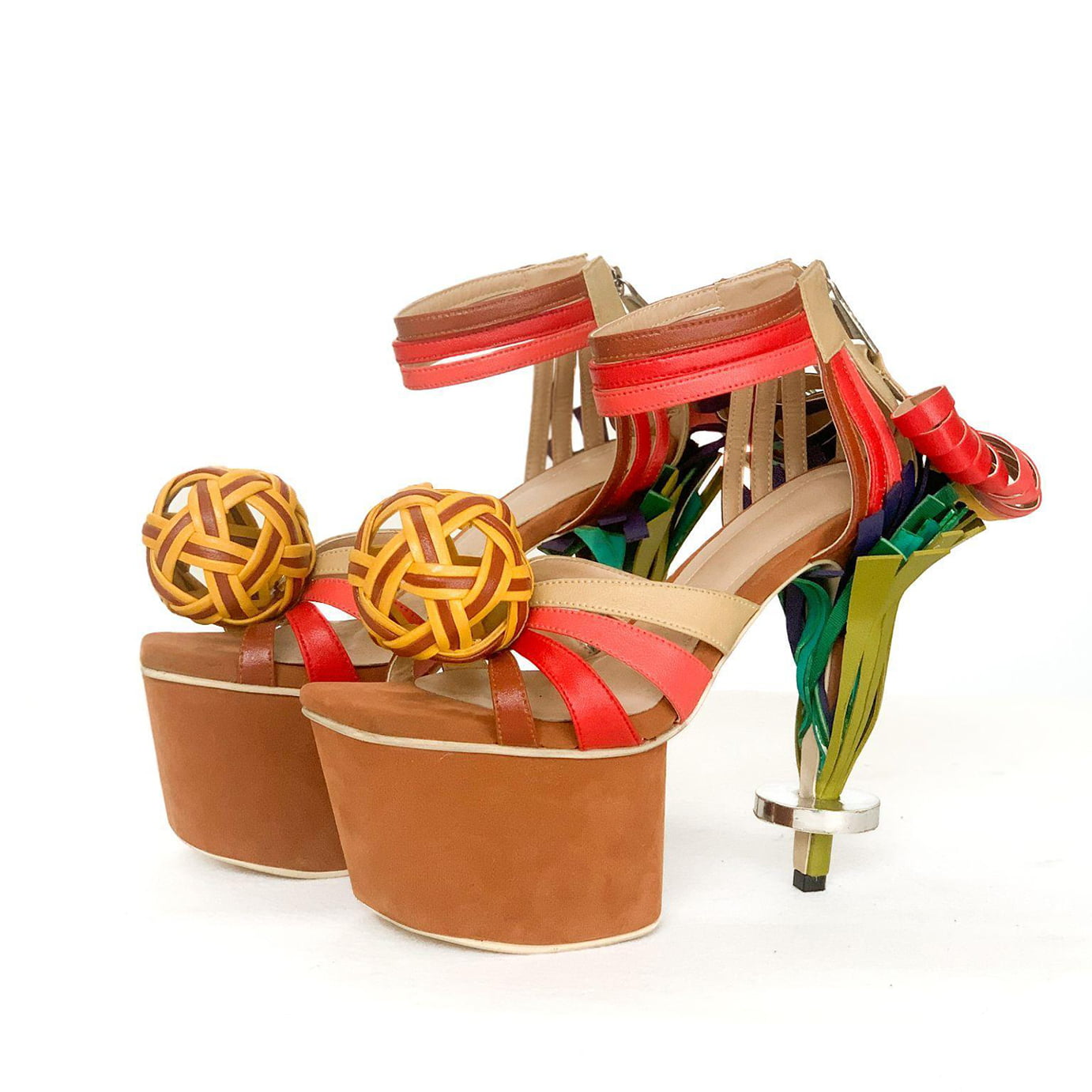
Young art student Ritche Rodulfo took inspiration from his childhood with his design entry Sipa which bagged the title of first runner-up. The design is drawn from the former national sport, Sipa, and advocates the importance of active play to the younger generation.
The concept makes use of the numerous variations of the game such as the rattan ball, rubber pom pom, shuttlecock, and lead washer, to further express the multiple ways of play, better constructed into wearable footwear by partner manufacturer Roweliza. Like the sport that inspired it, Sipa promotes the importance of gender equality in athletics, as well as maintaining good social health and wellbeing.
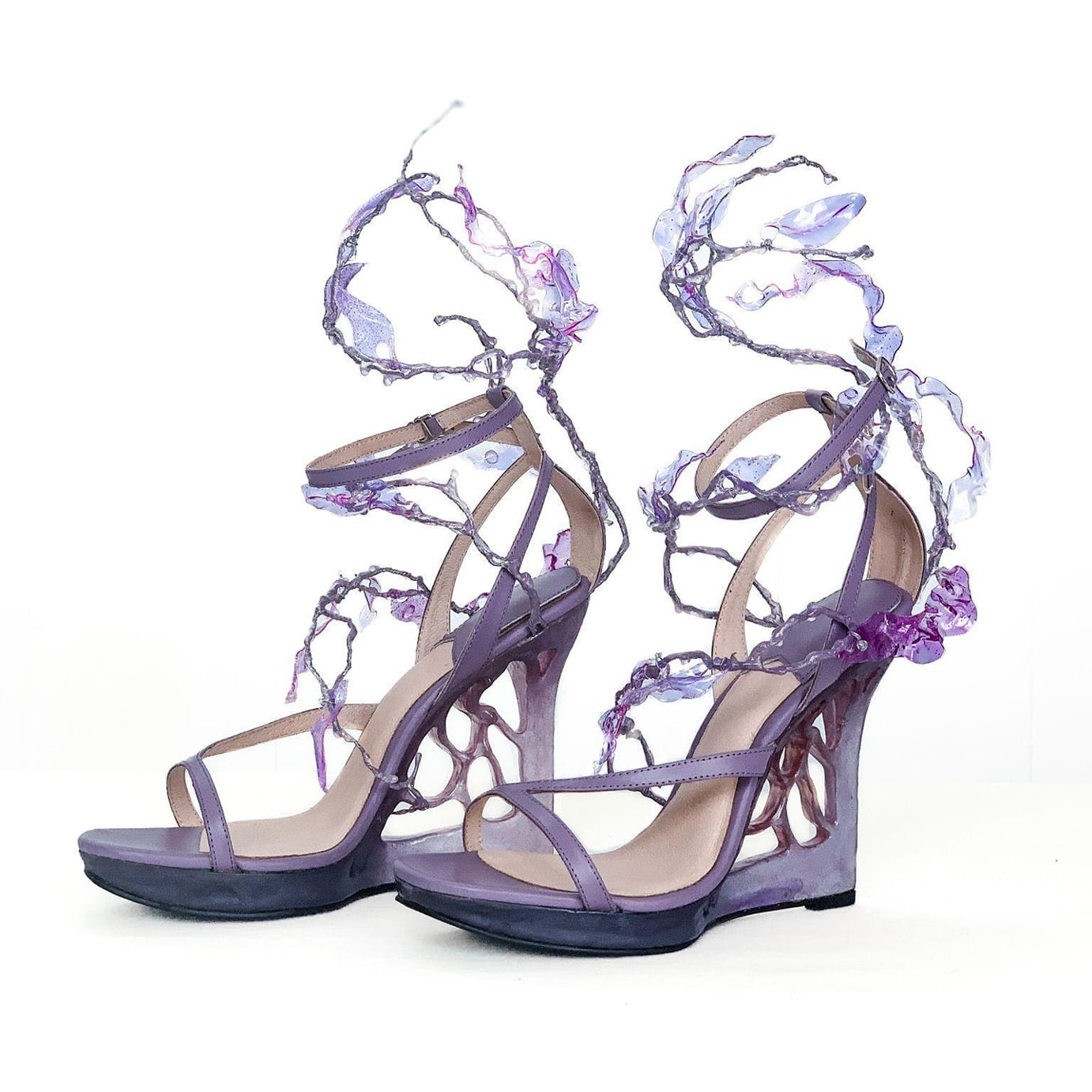
A special award for footwear construction was given to SoFA Design Institute student Kyla Gregorio for her biodiversity-driven entry, Dikya. Inspired by local jellyfish colonies and the mythical Visayan merfolk “Kataw,” Dikya advocates marine protection, especially against the growing practice of oceanic waste disposal.
Taking cue from waste reduction and upcycling, this entry made use of manipulated CDs to attain the tentacle decoration surrounding the pair, kept together through vines of rubber-coated wires, and a custom hand-sculpted resin heel. Noting the tediousness and form of the design, a special panel of technical footwear professionals dubbed the pair as a beautifully constructed creation. Dikya was developed with Filipino footwear company, Gibi Shoes.

Industrial designer Ivan Fabia highlighted pre-colonial gender roles with his empowering piece, Juana. This tall boot design stood grandiose as one of the Top 5 finalists with its intricate play of local materials and symbolic elements; such as the traditional tattoo patterns of Luzon and Visayas together with the Tongakiling bells of Mindanao.
Juana is a representation of powerful femininity, as how Filipina women were deemed community warriors and tribal leaders. Together with partner maker Roweliza, Juana is crafted with a scrap leather mosaic atop a body of gold. Further showcasing its Filipino inspiration, the design also uses local solihiya abaca and rattan weaving as part of its concept accent.
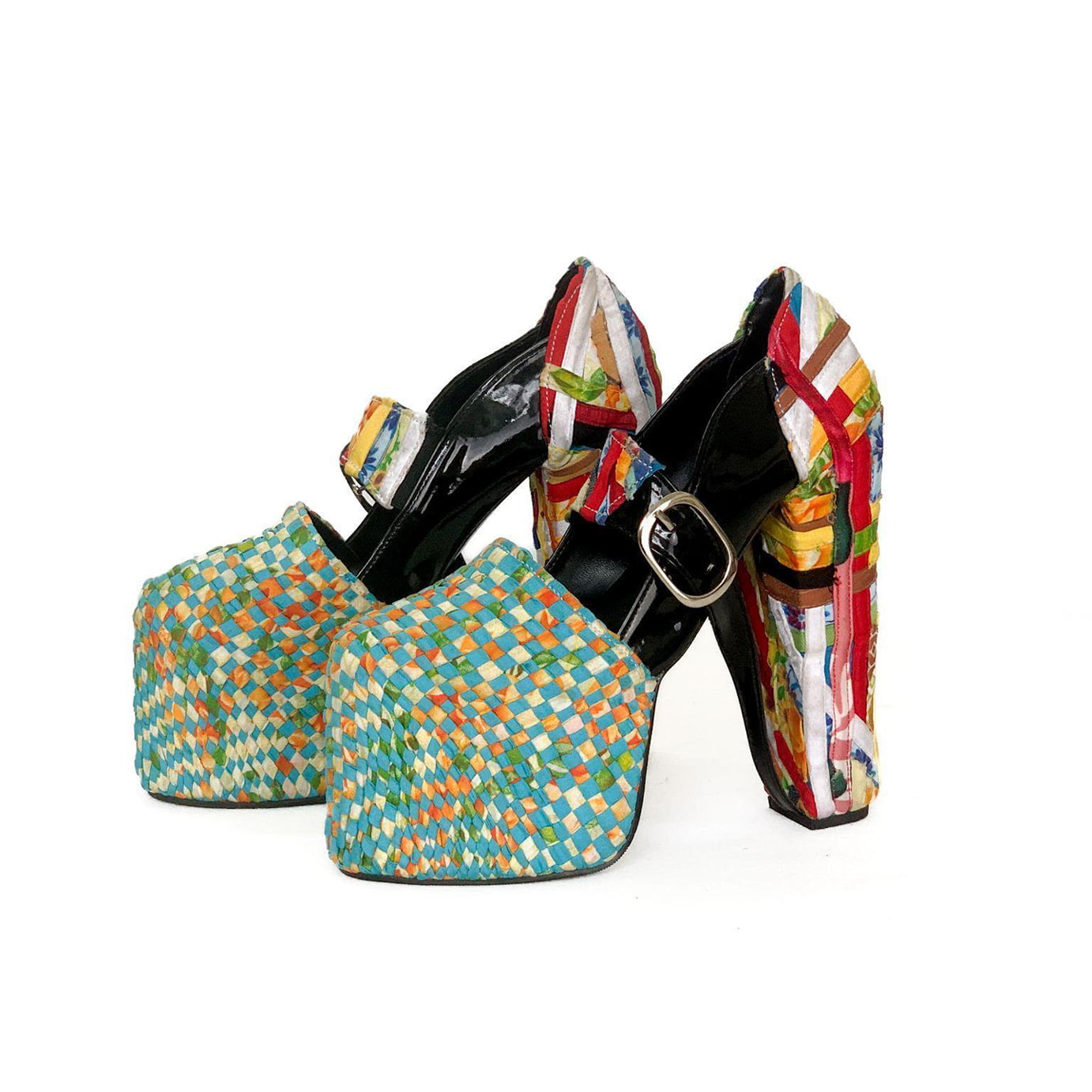
Kinse is a heartwarming concept created by spotlighting urban handicrafts. Hannah Algario, a student from Eastern Visayas State University, took inspiration from her experience growing up in Manila where she witnessed young street vendors selling handmade rags for only fifteen pesos.
Kinse represents the hard work of the marginalized to make a living for their families and the hope they have for their craft. The design aims to inspire people to start progressive changes to help those in need, especially the poverty-stricken who were forced to live on the streets. Together with partner manufacturer MilDim Handcrafted, Kinse was created with actual handwoven fabric rags personally prepared by the designer.
In addition to these winners, five more designers were able to land a spot in the semi-finals, namely Ardentine by Kim Panao, Anilao Sunset by Janerry Corpuz, Bakunawa by Ferry Villamil, Bente Uno by Kristine Masongsong, and S by Camille Albarracin.
With the copious number of entries screened, it is evident that Philippine local designers are eager to represent the country and the shared Filipino identity through their creative personal advocacies toward sustainability. As the international stage begins to open its doors once again through the International Footwear Design Competition to showcase the global footwear industry, celebrating local ingenuity would set the Philippines up as a country rich in culture and compelling competitive design.



